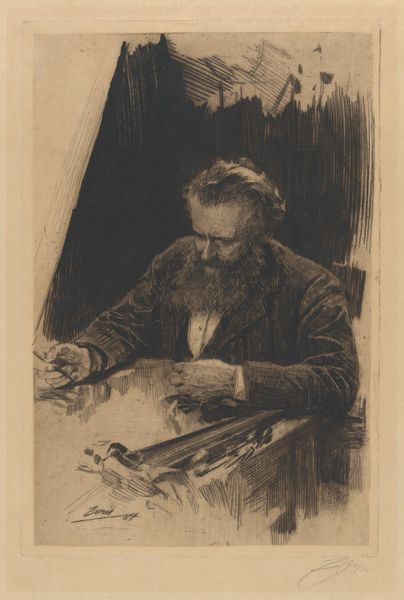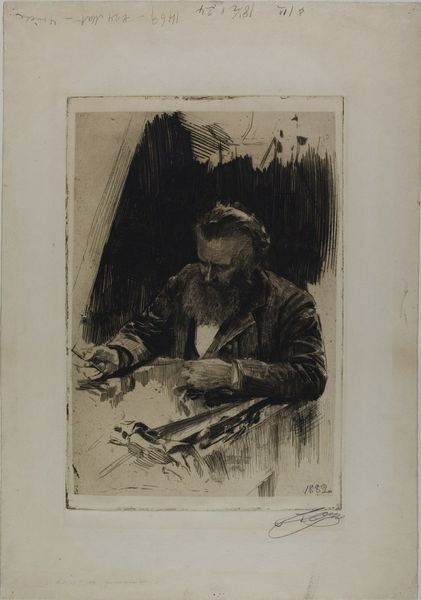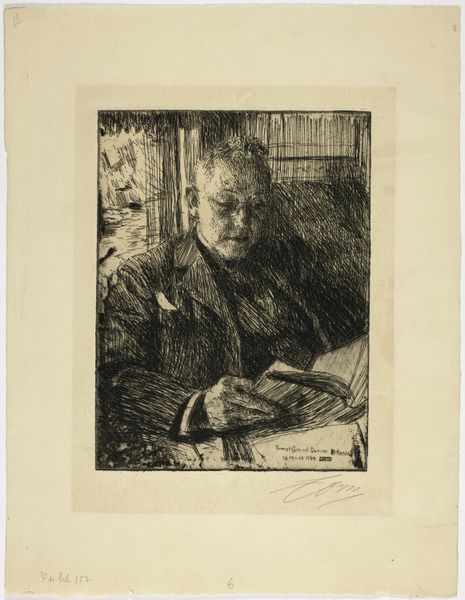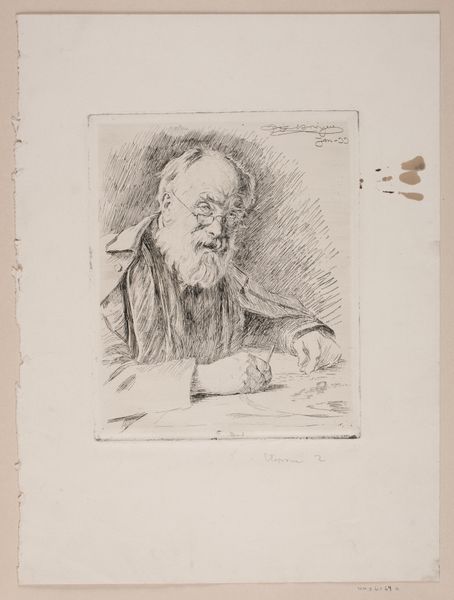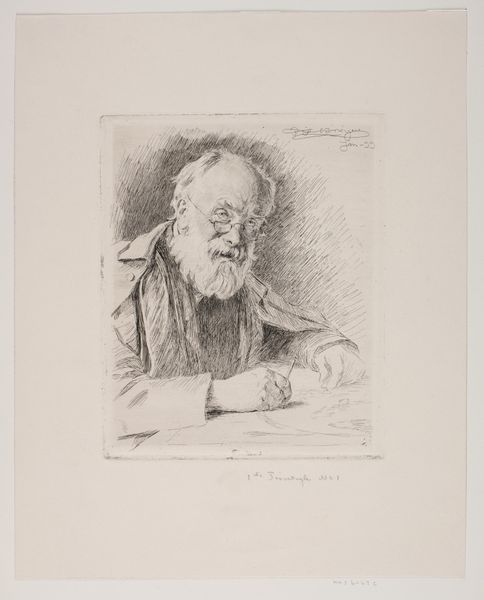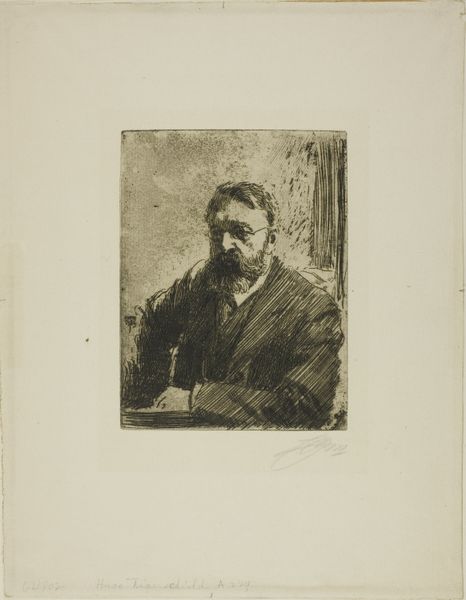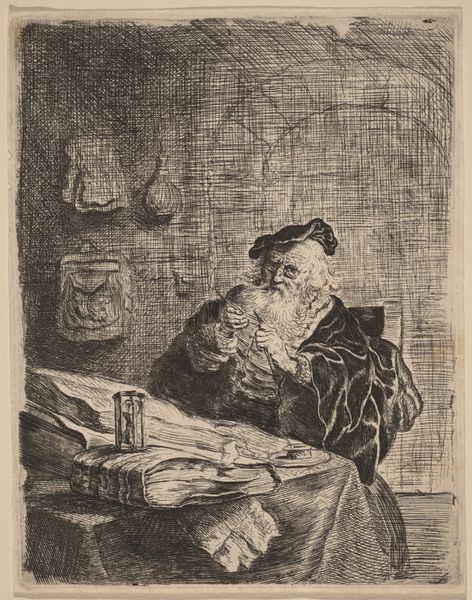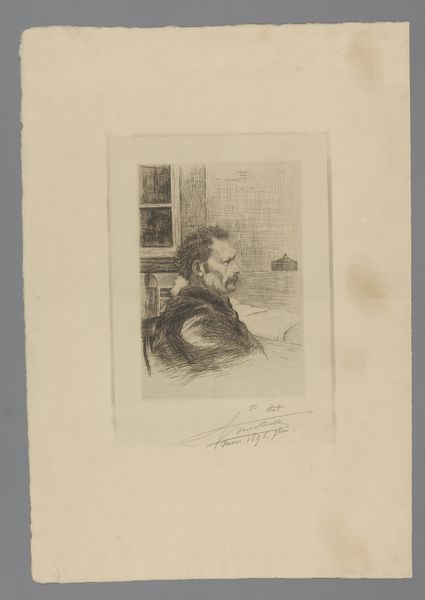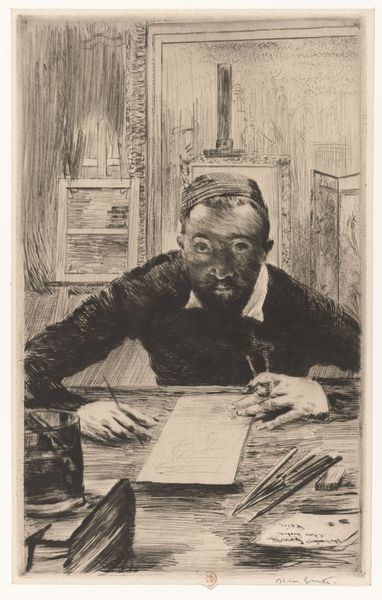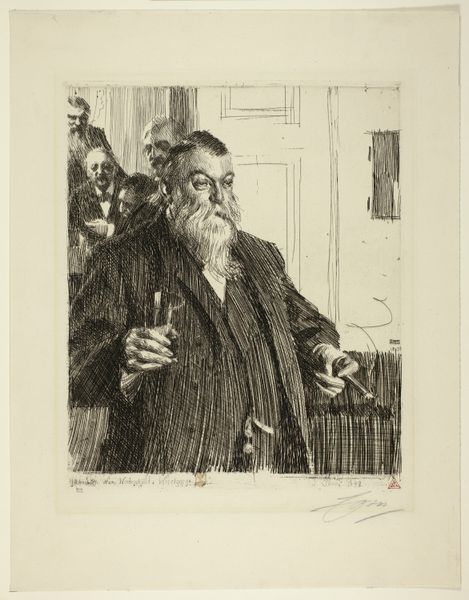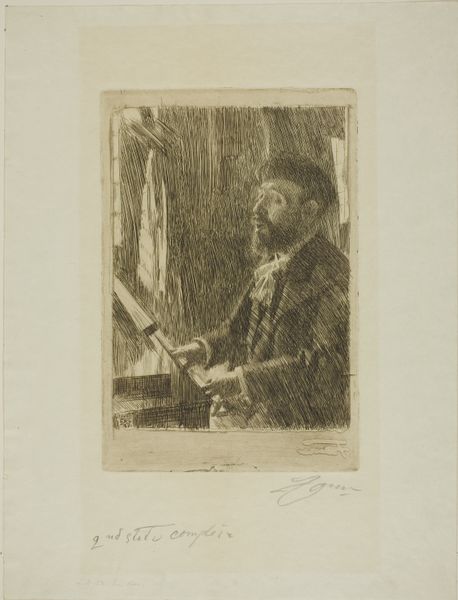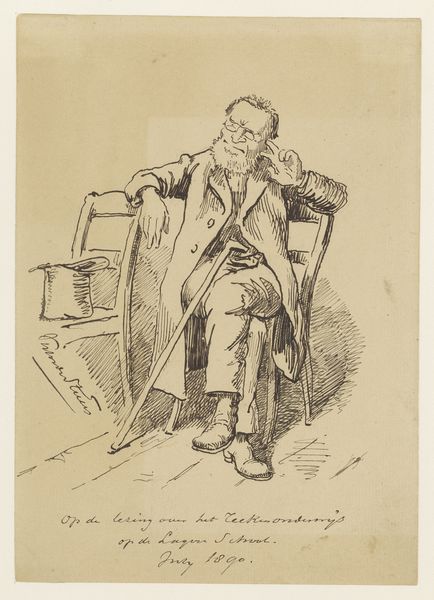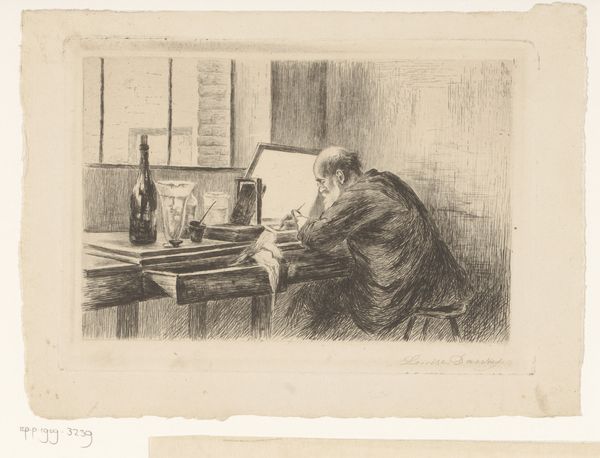
drawing, print, etching, paper
#
portrait
#
drawing
# print
#
etching
#
figuration
#
paper
#
realism
Dimensions: 377 × 254 mm (image); 385 × 261 mm (plate); 543 × 348 mm (sheet - folded)
Copyright: Public Domain
Editor: This is Anders Zorn's "Axel Herman Haig III," an etching from 1884 currently at the Art Institute of Chicago. It's incredible how much detail he achieved with just lines. What strikes me most is how the artist captures the subject's introspective mood, perhaps reflecting the creative process. How do you interpret the formal aspects of this piece? Curator: Focusing on form, one immediately notices the striking contrast. The strategic use of chiaroscuro, created through varying densities of etched lines, models the figure and contributes to a dynamic composition. The verticality of the lines in the background contrasts with the horizontal emphasis of the table, thereby framing Haig in a space that simultaneously constrains and supports his creative work. Notice also how the diagonal lines converge, drawing the eye to the central figure and creating a sense of depth within a relatively shallow plane. Does this interplay of line direction influence your perception of the subject's mental state? Editor: It definitely emphasizes his focus! The way the lines direct your gaze makes his concentration palpable. But the looseness of the lines in the background also gives a sense of a wider, maybe even chaotic, mental landscape. Curator: Precisely. The contrast between the tightly rendered figure and the more abstract background invites contemplation. It directs our attention to the tangible subject while hinting at intangible thoughts, revealing what painting lacks when stripped down to its structural components. Editor: Seeing it that way highlights how every formal choice contributes to the overall impact. Curator: Indeed. This exercise showcases how form isn't merely decorative; it’s fundamentally constitutive of meaning. Editor: Thanks! Thinking about line, contrast, and composition has definitely opened my eyes to new ways of interpreting portraiture.
Comments
No comments
Be the first to comment and join the conversation on the ultimate creative platform.
